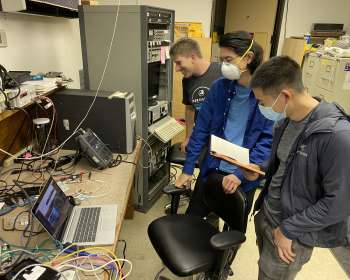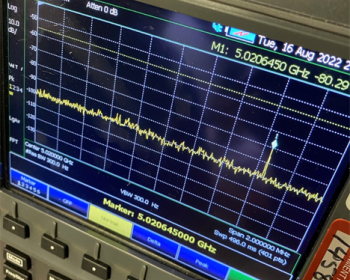Since the advent of the Global Positioning System (GPS) in the late 1970s, position, navigation and timing (PNT) based on satellite input has become a linchpin of modern technology. GPS now plays a critical role in transportation, aviation, marine navigation, finance, agriculture, environmental monitoring, emergency services, and many other commercial endeavors. But it is the distinct military advantage provided by GPS and its provision of highly precise location and timing information that has made GPS a target for adversaries who would seek to deny US military use of the technology by jamming or ‘spoofing’ its signals.

To address this increasing radiofrequency threat to GPS, The Aerospace Corporation - in partnership with Space Systems Command - is advancing solutions to augment and strengthen the nation’s PNT capabilities. By exploring the use of alternative radiofrequencies to transmit PNT signals, Aerospace is helping to expand the possibilities for space-based PNT architectures. Experts at Aerospace recently achieved a breakthrough in this area, successfully completing the first on-orbit downlink transmission over a frequency within the C-band.
“This successful transmission is significant because it establishes the United States as the leader in exploring the C-band Radionavigation Satellite Service spectrum for PNT,” said James Bardeen, Director of the Antenna Systems Department.
Understanding the Potential of C-band for PNT
This milestone was accomplished by an Aerospace-developed prototype named ACETaTE - short for the Aerospace C-band Experimental Transmitter and Technology Enabler - which is a payload on the recently launched Slingshot-1 mission. Unlike the heavily used L-band in which GPS broadcasts, the C-band spectrum is still underutilized and not yet fully explored for its PNT potential.
Developed in a scant four months, the ACETaTE prototype presented development challenges in the areas of thermal management and radiofrequency transmission. Aerospace engineers needed to design the system to contain the heat generated by the ACETaTE transmitter and protect the radioastronomy frequency band from encroachment by ACETaTE transmissions. Aerospace’s experimentation using ACETaTE will both evaluate how well the design performs and explore the potential for using C-band for PNT.

One inherent challenge with C-band is that signals are more susceptible to attenuation and propagation loss due to weather conditions like rain, fog and even clouds when compared to L-band. By obtaining a better understanding of vulnerabilities like these, experts will be better positioned to develop solutions that leverage the advantages of C-band while mitigating potential drawbacks of its limitations for PNT service.
“If we can fully characterize what happens to the C-band signal when going through different layers of atmospheric conditions, then we can understand how it can be used to augment things like future PNT constellations,” Bardeen said.
Augmenting PNT for the Warfighter and Exploring New Commercial Markets
The ACETaTE prototype is helping to understand whether C-band PNT would be a useful augmentation for L-band capabilities like GPS, especially for warfighters in contested environments. “For years, adversaries have attempted to jam L-band frequency ranges,” said Lara Schmidt, Associate General Manager in the Communications and Navigation Capabilities Division. “One of the things that C-band offers is that it’s a less contested part of the spectrum with some features that might offer protection against jamming using equipment that is also smaller, lighter, and more convenient for warfighters.”

The potential viability of C-band also has widespread implications for the broader space sector, including commercial ventures pursuing the development of capabilities using the new spectrum. ACETaTE’s findings could inform and potentially encourage more engagement from the commercial sector, which in turn, benefits national defense by providing more PNT options to support military missions.
“If you look at the new approach to acquiring space capability to support the warfighter, the philosophy is to first identify what’s available in the commercial market and then adapt it for military applications as appropriate,” Schmidt said. “If C-band PNT does in fact look promising, that certainly enhances the attractiveness for commercial providers to enter the market. ACETaTE is helping us understand the viability of such commercial PNT services.”

